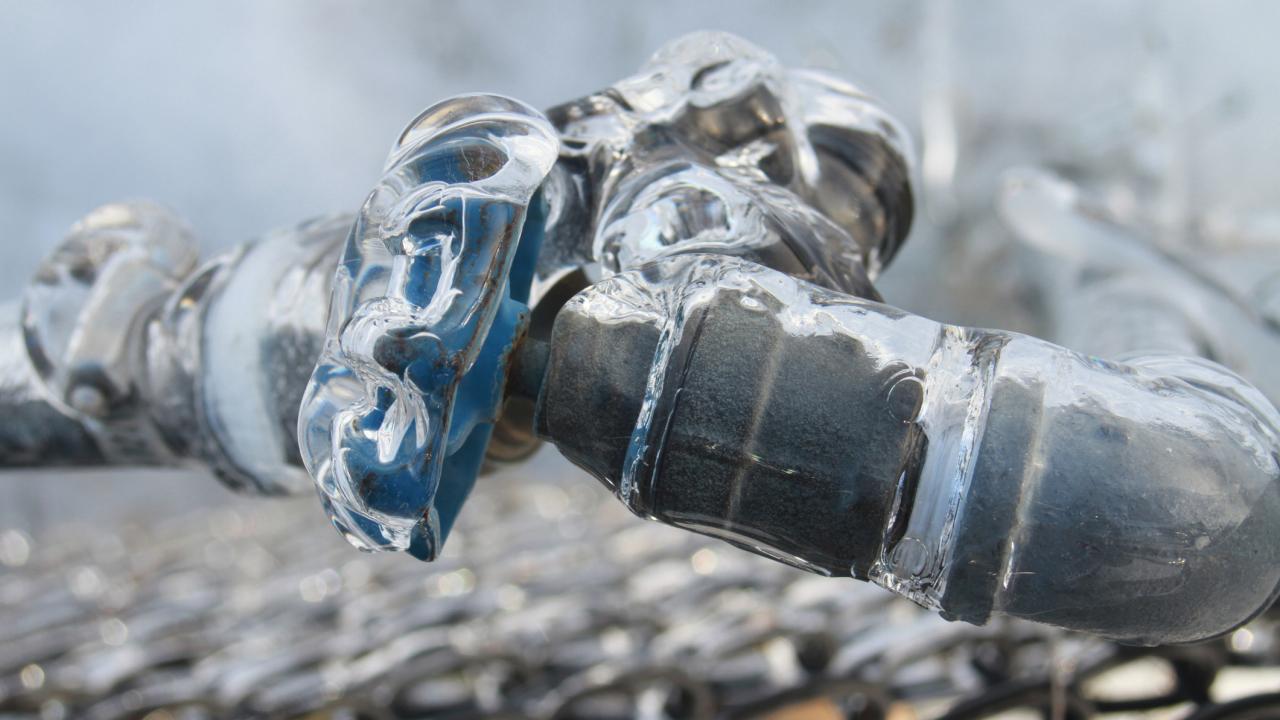Essential Strategies for Avoiding Frozen Plumbing in Cold Weather
Essential Strategies for Avoiding Frozen Plumbing in Cold Weather
Blog Article
Just how do you feel in relation to 6 Ways to Prevent Frozen Pipes?

Winter can damage your plumbing, specifically by freezing pipelines. Here's just how to avoid it from taking place and what to do if it does.
Introduction
As temperatures decrease, the risk of icy pipes rises, potentially bring about expensive repair services and water damage. Comprehending just how to prevent frozen pipes is crucial for home owners in chilly climates.
Avoidance Tips
Insulating prone pipelines
Cover pipes in insulation sleeves or make use of heat tape to protect them from freezing temperatures. Concentrate on pipelines in unheated or external areas of the home.
Home heating methods
Keep interior areas sufficiently heated, particularly locations with plumbing. Open up closet doors to permit warm air to distribute around pipelines under sinks.
How to determine icy pipelines
Look for reduced water circulation from taps, uncommon smells or sounds from pipes, and visible frost on exposed pipes.
Long-Term Solutions
Structural modifications
Take into consideration rerouting pipelines far from exterior walls or unheated areas. Add extra insulation to attics, cellars, and crawl spaces.
Updating insulation
Purchase high-grade insulation for pipelines, attic rooms, and walls. Correct insulation aids keep constant temperature levels and minimizes the risk of icy pipelines.
Securing Exterior Plumbing
Garden pipes and outdoor faucets
Separate and drain garden tubes before wintertime. Mount frost-proof spigots or cover outside taps with shielded caps.
Comprehending Icy Pipes
What causes pipes to ice up?
Pipelines ice up when exposed to temperatures below 32 ° F (0 ° C) for prolonged durations. As water inside the pipelines ices up, it increases, taxing the pipe walls and potentially triggering them to rupture.
Dangers and problems
Frozen pipes can lead to water system interruptions, residential or commercial property damages, and pricey repairs. Burst pipes can flooding homes and cause comprehensive structural damage.
Indications of Frozen Water Lines
Recognizing icy pipes early can avoid them from bursting.
What to Do If Your Pipelines Freeze
Immediate activities to take
If you presume frozen pipes, maintain faucets open to eliminate pressure as the ice melts. Make use of a hairdryer or towels taken in warm water to thaw pipes slowly.
Conclusion
Preventing frozen pipelines calls for proactive procedures and fast feedbacks. By understanding the reasons, indications, and preventive measures, house owners can protect their plumbing throughout winter.
6 Proven Ways to Prevent Frozen Pipes and Protect Your Home
Disconnect and Drain Garden Hoses
Before winter arrives, start by disconnecting your garden hoses and draining any remaining water. Close the shut-off valves that supply outdoor hose bibs and leave the outdoor faucet open to allow any residual water to drain. For extra protection, consider using faucet covers throughout the colder months. It’s also important to drain water from any sprinkler supply lines following the manufacturer’s directions.
Insulate Exposed Pipes
Insulating your pipes is an effective way to prevent freezing. Pipe insulation is readily available at home improvement stores and is relatively inexpensive. Pay close attention to pipes in unheated areas such as the attic, basement, crawl spaces, or garage. Apply foam insulation generously to create a buffer against the cold. You can also wrap your pipes in heat tape or thermostat-controlled heat cables for added warmth.
Seal Air Leaks
Inspect your home for any cracks or openings that could let in cold air. Seal any holes around the piping in interior or exterior walls, as well as the sill plates where your home rests on its foundation. Additionally, make sure to keep your garage door closed unless you’re entering or exiting. Leaving it open creates a significant air leak that can lead to frozen pipes.
Allow Warm Air Circulation
During cold snaps, it’s essential to allow warm air to circulate evenly throughout your home. Leave interior doors ajar to promote better airflow. Open kitchen and bathroom cabinets to help distribute heat consistently around the rooms. If you have small children or pets, be sure to remove any household chemicals or potentially harmful cleaners from open cabinets for safety.
Let Faucets Drip
A small trickle of water can make a big difference in preventing ice formation inside your pipes. When temperatures drop significantly, start a drip of water from all faucets served by exposed pipes. This continuous flow helps prevent the water from freezing. Additionally, running a few faucets slightly can relieve pressure inside the pipes, reducing the chances of a rupture if the water inside does freeze.
https://choateshvac.com/6-proven-ways-to-prevent-frozen-pipes-and-protect-your-home/

I'm just very occupied with 6 Ways to Prevent Frozen Pipes and I hope you enjoyed my blog posting. Make sure you take the time to distribute this entry if you liked it. Many thanks for going through it.
Free Quote Report this page